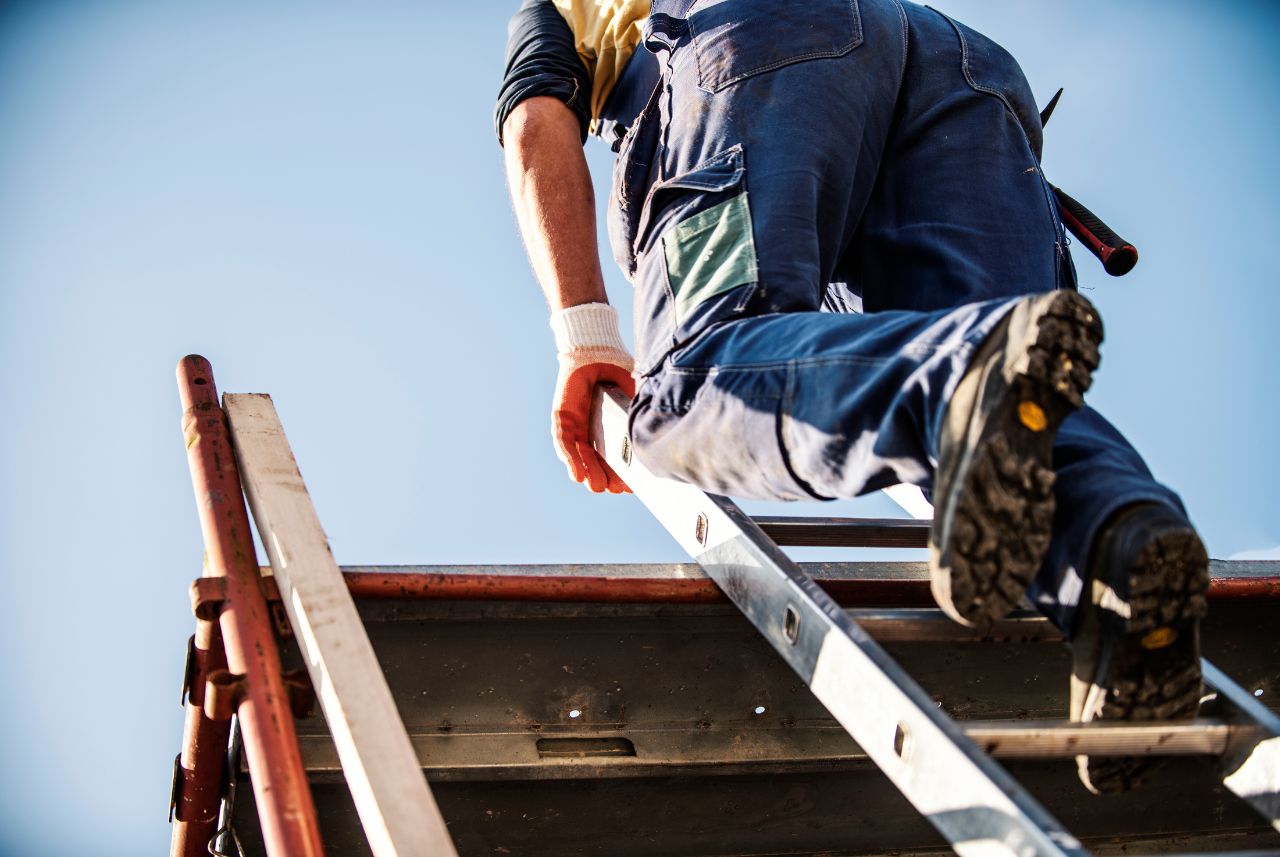
Working at height regulations aim to protect employees who work at height from injury or death. The regulations help to ensure employers take adequate steps to minimise the risks of falls and other height-related accidents.
Under the UK Work at Height Regulations 2005 employers must implement robust safety measures and provide appropriate equipment and training to prevent accidents and injuries.
The regulations protect employees across all sectors in which working at height is part of daily operations. In this guide we look at the risks of working at height and how employers can fulfil their legal responsibilities.
What are the risks of working at height?
Falling from height is one of the leading causes of death in the workplace. Of the 135 workers killed in 2022/23, 54 deaths were caused by falls from a height – an increase of 19 from the previous year.
The statistics bring into stark focus the dangers of working at heights. While not all falls are fatal, some can leave lasting and permanent damage, leading to injuries such as:
- Brain damage.
- Broken bones.
- Crushed organs.
- Severe bruising.
Construction workers are most likely to be more at risk of falling from heights due to the nature of their work. However, falls from a height can happen anywhere and in any job role, from picking items from a tall shelf in a shop to putting up posters in an office.
What is the definition of ‘working at height’?
The Health and Safety Executive (HSE) define work at height as ‘working in any place where, if precautions were not taken, a person could fall a distance liable to cause personal injury’.
The HSE classes working at height as:
- Working above ground/floor level.
- Working with ladders or stools.
- Working where there is a risk of falling from an edge through an opening or fragile surface.
- Working from ground level into an opening in a floor or hole in the ground.
There are no specific height requirements to be met for work at height.
Slipping or tripping on a level does not count as falling from height. Walking up or down a permanent staircase is also not classed as working from height.
Working at height legislation applies to any role, regardless of the equipment used, the duration of the work or the height at which the work is performed.
What are an employer’s responsibilities under working at height regulations?
The Working at Height Regulations 2005 state that an employer should avoid employees working at height if possible.
When working at height cannot be avoided, employers must do everything reasonably practicable to minimise the likelihood of a fall and the severity of injury in case of a fall.
Employers must arrange for a thorough risk assessment to be carried out by a competent person. A competent person is someone who has sufficient training and experience or knowledge and other qualities to identify hazards others might miss and advise on risk management.
To comply with working at height regs, employers must ensure:
- Work is well-planned.
- The right equipment is provided and that it is in good condition.
- There is adequate supervision.
- Work is carried out by a ‘competent’ person (see the definition of ‘competent’ above).
- If an inexperienced employee is working at height, they are supervised by someone who is competent.
How to comply with working from height regulations
Plan the work
Before undertaking an activity that involves working at a height, plan the process carefully.
Ensure a risk assessment is carried out to determine potential fall distances and identify hazards such as unstable surfaces, overhead obstructions, or adverse weather conditions.
Make sure:
- Appropriate equipment is provided for the job, such as ladders, scaffolding or mobile elevating work platforms (MEWPs).
- Employees are trained on the specific asks they will perform and that they understand the risks and how to mitigate them.
- Emergency procedures are implemented and understood by employees, including rescue plans if someone falls or becomes trapped.
Provide the right personal protective equipment (PPE)
Provide PPE as needed for the job such as helmets, protective gloves, and harnesses. Employees should be trained on the correct use, maintenance, and limitations of PPE to ensure it provides the intended protection.
Use ladders correctly
While ladders are crucial for many working at height jobs, they can pose significant risks if misused.
For information about the safe use of ladders, see the HSE’s guide on the safe use of ladders and stepladders. To find out about an employer’s responsibilities for ladder safely, please read Your essential guide to UK ladder regulations.
We offer Ladder Safety Training, an IOSH Approved eLearning course created by experienced health and safety professionals. The course helps to ensure employees know how to conduct safety checks and can set up and use ladders correctly. It supports employers to comply with working from height regulations.
Ladder safety is also covered in our comprehensive Working at Heights Training (see below).
Inspect equipment
Under the Personal Protective Equipment at Work Regulations 1992 and the Provision and Use of Work Equipment Regulations 1998 all equipment used at work (including PPE) must be regularly inspected to ensure it is safe to use.
Any weaknesses or damage to equipment should be reported and repaired or replaced to prevent any accidents.
Conduct routine inspections of all equipment, including PPE, ladders, scaffolding, and safety harnesses, to ensure they are in good condition. Encourage employees to report any equipment defects or damage. Promptly repair or replace compromised equipment to maintain a safe working environment.
Stay vigilant
Before starting work, employees should assess their surroundings to identify and address any potential hazards.
Encourage employees to stay alert during their working at height activity in case equipment becomes unstable or hazards arise, for example, members of the public turn up, or there is severe weather.
Supervision
Supervision is not always possible but should be encouraged. When using ladders or harnesses, ideally, a second employee should watch the person working at height to help direct them or prevent any slips of the ladder.
A person supervising can alert others of emerging hazards or help if there is an emergency.
Training
Providing employees with work at height training supports compliance with the Work at Height Regulations 2005. It also supports compliance with the Health and Safety at Work etc. Act 1974 which states that employers must provide employees with the training they need to undertake their work safely.
Working at height training ensures employees understand the hazards associated with working at height and know how to mitigate the risks. It is important to provide regular refresher training to ensure their knowledge stays fresh and they are up to date with current safety practices and regulations.
Praxis42 Working at Height Training
Developed by specialist health and safety consultants, our online Working at Height Training supports compliance with working at height regulations and helps to encourage a culture of safety within your organisation.
Training is IOSH Approved and CPD Certified and follows the HSE’s guidance, Safe use of Ladders and Step Ladders – An employers guide IND(G) 402 and The Work at Height Regulations – A Brief Guide’ AND(G) 401.
To find out what is covered in Working at Height Training, please visit our website or contact us on 0203 011 4242/info@praxis42.com

Adam Clarke
Managing Director (Consulting)
